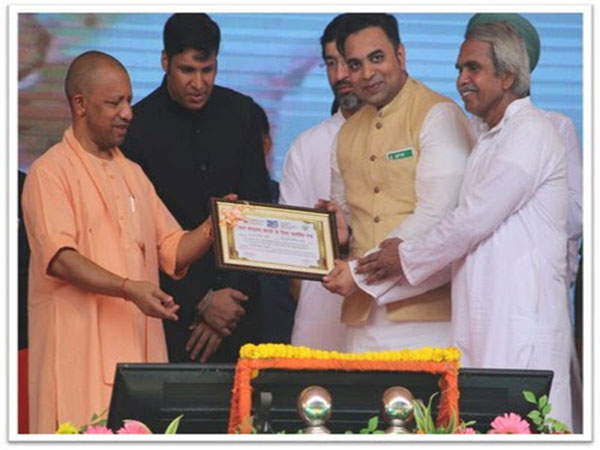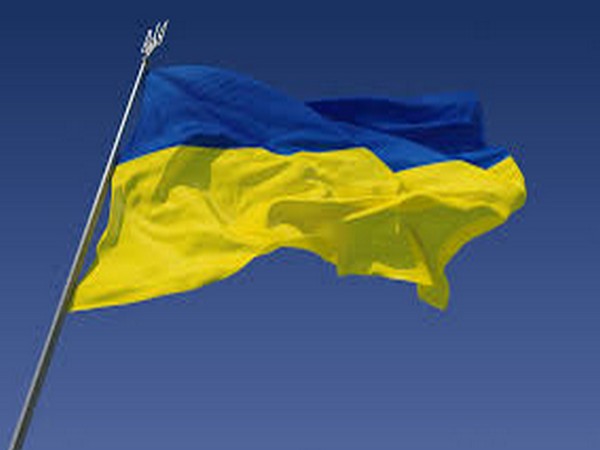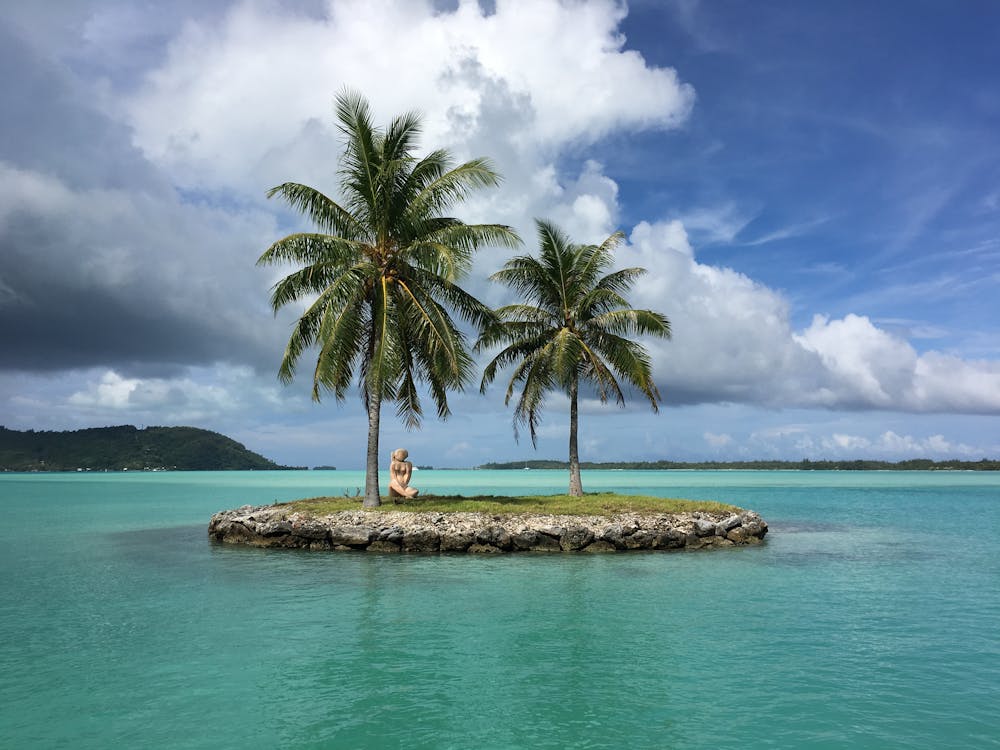The Remarkable Rampur Revival by The Art of Living
Apr 30, 2024
PRNewswire
Bengaluru (Karnataka) [India], April 30: In the heart of Uttar Pradesh, where the ebb and flow of the Kosi River once dictated life's rhythms, a new chapter is being written. The Art of Living Social Projects River Rejuvenation Team, with inspiration and guidance from Gurudev Sri Sri Ravi Shankar, has embarked on a bold mission to address water resource challenges in Rampur District, breathing life into parched lands and forging a path towards sustainability.
Rampur District, once a bustling hub of agricultural activity, found itself grappling with a dual dilemma: water shortages in the scorching summer months and devastating floods during the monsoon season. The need for a delicate balance between abundance and scarcity spurred the team into action.
The Art of Living approach was as innovative as it was pragmatic. They set out to harness the untapped potential of floodwaters and base flow, channeling them into groundwater reserves that could sustain both irrigation and drinking needs. The concept was simple yet profound: converting excess water into a lifeline for the community.
Recognizing that true change begins with education, they launched water literacy awareness camps and programmes, inviting over 7,000 individuals to join them in the journey towards sustainable solutions. Through these initiatives, they fostered a sense of community ownership and empowerment, laying the groundwork for lasting change.
The results of their pilot project were nothing short of transformative. Across 80 villages, they implemented 244 recharge shafts in 122 ponds and constructed a groundbreaking subsurface dyke. These interventions not only replenished groundwater reserves but also provided a lifeline to the surrounding farmlands, enabling farmers to thrive in the face of adversity.
Success through Meticulous Methodology and Technical Prowess
The team's journey began with a comprehensive investigation into surface and water levels to understand existing challenges. Armed with insights from reconnaissance surveys, they embarked on a mission to revitalize the Kosi River and its tributaries. Their innovative idea, the subsurface dyke, aimed to convert floodwater into groundwater. After its construction, along with recharge shafts in ponds, groundwater status improved significantly. According to the 2022 report by the Central Ground Water Board, Chamraua shifted from 'critical' to 'semi-critical,' and Saidnagar from 'semi-critical' to 'safe.'
The impact of these interventions was swiftly felt in villages like Behla and Benjana, where farmers had long struggled with water scarcity. With the implementation of recharge shafts and subsurface dykes, the water table began to rise, offering newfound hope to the agricultural community.
This pilot initiative garnered significant success, prompting plans for further expansion into other overexploited areas. The team's ultimate goal is to replicate these solutions on a larger scale, revolutionizing water management practices and fostering sustainability across flood plains in Uttar Pradesh.
How do Recharge Shafts Function?
Recharge shafts (RS), a crucial component of water conservation efforts, are deployed in ponds to facilitate rainwater harvesting. These structures effectively track the surface flow of water, guiding it downwards through natural filters, ultimately reaching depths of up to 100 ft.
Innovative modifications have been introduced to enhance the efficiency of recharge shafts (RS), including the adoption of horizontal pipes for water extraction instead of vertical pipes. Other improvements in design, such as alterations in size, filter media, pipe positioning within the chamber, provision of external plaster, and the incorporation of reinforced concrete raft foundations, have further optimized their functionality compared to previous iterations in and around Rampur, Uttar Pradesh.
How do Subsurface Dykes Function?
Subsurface dykes (SSD) represent a pioneering groundwater conservation technique developed by The Art of Living scientists. With authorization from the Uttar Pradesh Administration, the first SSD was constructed in the Bhalla Stream, targeting the capture of base flow.
Distinguished by their ability to tap into base flow, SSDs stand apart from conventional recharge structures, which primarily target surface flow. The Art of Living conducted meticulous efficiency evaluations using three observation wells strategically positioned around the structure. These wells, situated both upstream and downstream, serve as vital indicators of the SSD's effectiveness, with pre and post monsoon assessments shedding light on its impact on groundwater levels.
Geographic Information System (GIS) technology also played a pivotal role in this initiative, facilitating the monitoring of watershed areas, stream mapping, and identification of soil layer locations. Leveraging GIS insights, The Art of Living team validated potential sites for recharge shafts and SSDs, seamlessly integrating scientific expertise with community engagement and innovative design principles.
Community Leadership Programmes
One of the key initiatives under this project is the Community Leadership Programs, which aim to train relevant stakeholders in village development and management, equipping them with skills to lead local initiatives. This fosters community ownership, ensuring effective implementation. Diverse training programmes, from Youth Leadership to Women Leadership Training, cultivate leadership and promote inclusivity and responsibility in water conservation.
Water Literacy Programmes
Through initiatives like Antar Jalchetana (Water Literacy Programs), participants gain insights into their water consumption patterns, cropping practices, and efficient farming techniques. They also learn about rainfall measurement, evaporation rates, and other essential aspects of water management.
A crucial component of the Water Literacy Programs is the preparation of water profile layouts for villages. These layouts provide stakeholders with a comprehensive understanding of water demand-supply dynamics, enabling them to plan their water utilization effectively. By involving rural women in these programmes, social equity and inclusivity is ensured.
A Network of Jalmitras Spread Awareness at the Grassroots Level
To amplify the impact of water conservation initiatives, The Art of Living trains volunteers known as Jalmitras. These dedicated individuals play a vital role in disseminating knowledge about water conservation within their communities.
Reflections on Progress
Rajni Devi, Pradhan, Chamraua, Rampur, U.P.:
"The Art of Living has been working in the areas of water conservation, environmental conservation, and public health and hygiene. With the guidance of Gurudev Sri Sri Ravi Shankar, they have conducted numerous youth and women's leadership camps to raise awareness about various issues. Many recharge shafts have been built. Water used to flow after rains, but now it retains, resulting in groundwater recharge."
Kamal Kumar, Gram Pradhan, Chamraua, Rampur, U.P.:
"Under the MGNREGA scheme The Art of Living constructed various recharge shafts to recharge groundwater and a subsurface dyke to prevent water from flowing. Today the water situation has improved. I would like to thank Gurudev Sri Sri Ravi Shankar and The Art of Living for all the work done in these villages."
Mohmmad Shafi Khan, Gram Pradhan:
"Depletion of groundwater was one of the major concerns in Chamraua, Rampur, UP. The Art of Living conducted many awareness and leadership camps for the women and youth to take part in this initiative. After construction of recharge wells and subsurface dyke water was restored. Subsurface dyke prevented the flow of water. I am grateful for this required and quick action taken."
As the sun sets on another day in Rampur, the team stands on the brink of a brighter tomorrow. Through their collective efforts, they have turned the tide of adversity. They have not only revived a river; they have revitalized a community and set the stage for a future where water scarcity is but a distant memory.
About The Art of Living - Social Projects
The Art of Living, a non-profit, educational, and humanitarian organisation founded in 1981 by the world-renowned humanitarian and spiritual leader Gurudev Sri Sri Ravi Shankar, works closely with the Government of India to relieve the country from water scarcity through various water conservation projects.
Follow at: https://www.instagram.com/artofliving.sp/
Like at: https://www.facebook.com/artoflivingsocialprojects
Tweet at: https://twitter.com/artofliving_sp
Message at: https://www.linkedin.com/showcase/artofliving-sp
Photo: https://mma.prnewswire.com/media/2400311/AOL_Water_Conservation_Award.jpg
Logo: https://mma.prnewswire.com/media/1979631/4470449/AOLSP_logo_Logo.jpg
(ADVERTORIAL DISCLAIMER: The above press release has been provided by PRNewswire. ANI will not be responsible in any way for the content of the same)








